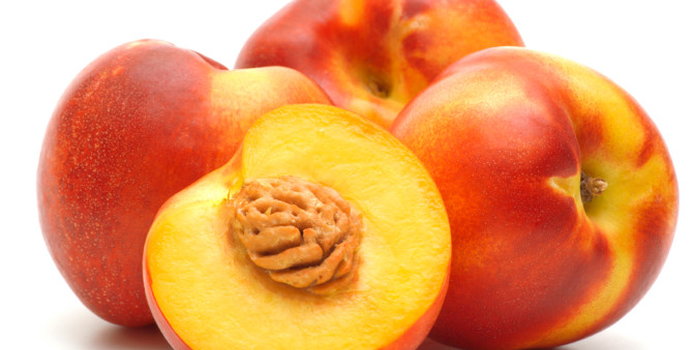The major difference between nectarines and peaches is that nectarines have smooth skins while peach skins are covered with a fine down-like fuzz. Nectarines are also smaller and usually have a slightly sweeter taste than peaches. To grow nectarines, growers cross breed peach trees that carry the necessary recessive genes to create nectarines.
Nectarines are thought to have originated in Asia. They were cultivated in ancient China, Persia, Greece and Rome. The first mention of the fruit in Europe was in the 1600's. By 1957, 19 varieties of nectarines were registered in the United States. California produces most of the nectarines grown in the US.
Nutritional Value
One medium size nectarine contains:
- 70 calories
- 0.5 grams total fat
- 2 grams fiber
- 1.5 grams protein
- 15 percent of the RDA of vitamin C
- 8 percent of the RDA of potassium
- 4 percent of the RDA of vitamin A
- 2 percent of the RDA of iron
Nectarines are free from saturated fat, sodium and cholesterol. Their portability and natural sweetness make them a perfect snack to satisfy a sweet tooth when dieting.
Selection
Look for nectarines that are large in size with smooth, unblemished skin. Ripe nectarines will give slightly to the touch. Avoid fruit with any green areas; they may not have a chance to fully ripen before spoiling. Nectarines should ideally be purchased ripe but may be helped along by placing them in a brown paper bag for a few days. Like peaches, nectarines are very delicate, so be careful not to bruise them.
Storage
Nectarines will last up to 5 days in the refrigerator, but they taste the best at room temperature. It's best to take them out of the refrigerator to sit a while prior to eating.
To freeze nectarines: Cut ripe fruit into slices and remove any bruised areas. Next mix the slices with a syrup solution or fruit juice. Then transfer the slices into a zip-lock storage bag. They will keep in the refrigerator for up to a year.
Preparation ideas
Nectarines can be eaten raw, poached, grilled, canned or used in baked goods. They can be substituted in any recipe that calls for peaches. One benefit to using nectarines over peaches when making cobblers or pies is the fact that you can forgo the peeling process. Nectarines can be baked with their skins left intact while peaches need to be peeled prior to baking.
Nectarines are a wonderful fruit to pair with chicken, fish or ham. Their natural sweetness enhances the flavor of these meats. Nectarine salsa is a great topper for fish or chicken tacos. Nectarine chutney tastes fantastic on pork chops or chicken breasts.
Sliced nectarines can be used to top cereal or yogurt for added sweetness. Frozen nectarines can be blended with low fat milk, or soy milk, to make a nutritious smoothie.



